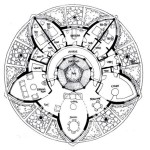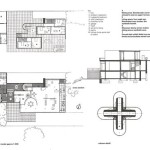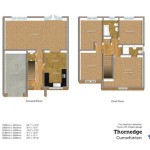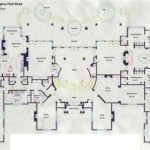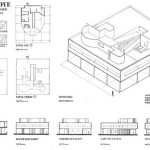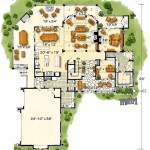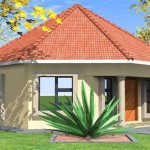Create Tiny House Floor Plans
Designing a functional and comfortable tiny house requires careful planning, and a well-crafted floor plan is the foundation of this process. A thoughtfully designed floor plan maximizes space utilization, ensures efficient traffic flow, and incorporates necessary amenities within a limited footprint. This article explores the key aspects of creating effective tiny house floor plans.
Determine Needs and Lifestyle
Before beginning the design process, it is crucial to assess individual needs and lifestyle preferences. This analysis informs design choices and ensures the final plan meets specific requirements. The following factors are essential considerations:
- Number of occupants
- Desired amenities (e.g., full bathroom, dedicated workspace)
- Storage requirements
- Lifestyle considerations (e.g., hobbies, entertaining)
Establish a Realistic Budget
Setting a realistic budget is paramount to the success of any building project, and tiny houses are no exception. Material costs, labor, and permitting fees should be considered. A well-defined budget helps guide design choices and prevents overspending.
Measure and Optimize Space
Accurate measurements are critical to a successful tiny house design. Every inch of space must be carefully considered and optimized for maximum utility. Utilizing vertical space, incorporating multi-functional furniture, and employing built-in storage solutions are effective strategies to maximize functionality within a limited footprint.
Prioritize Functionality and Flow
The layout should prioritize functionality and efficient movement within the tiny house. Traffic flow should be unobstructed, and essential areas, such as the kitchen and bathroom, should be easily accessible. Consider the placement of doors, windows, and furniture to ensure optimal flow and avoid cramped spaces.
Consider Building Codes and Regulations
Building codes and regulations vary by location and must be adhered to during the design and construction phases. Researching local regulations regarding tiny houses is essential to ensure compliance and avoid potential issues. These regulations may encompass size restrictions, safety requirements, and utility connections.
Utilize Design Software or Graph Paper
Utilizing design software or graph paper allows for precise planning and visualization of the space. Software options offer advanced features, such as 3D modeling and virtual tours. Graph paper provides a more traditional approach, allowing for detailed sketching and measurements. Both methods enable the creation of accurate and detailed floor plans.
Incorporate Essential Zones
A well-designed tiny house floor plan incorporates distinct zones for various activities, including sleeping, cooking, and living. Defining these zones creates a sense of order and maximizes the functionality of each area. These zones can be delineated using furniture placement, room dividers, or changes in flooring material.
Maximize Natural Light
Natural light enhances the perception of space and creates a more welcoming environment. Strategically placed windows and skylights maximize natural light penetration and reduce the need for artificial lighting. Consider the orientation of the tiny house to optimize sunlight exposure throughout the day.
Plan for Storage Solutions
Storage is a crucial consideration in tiny house design. Incorporating built-in storage solutions, such as under-bed drawers, loft storage, and wall-mounted shelves, maximizes space utilization and minimizes clutter. Utilizing vertical space and multi-functional furniture also contributes to efficient storage.
Choose Appropriate Appliances and Fixtures
Selecting appropriately sized appliances and fixtures is essential for maximizing space and functionality in a tiny house. Opting for smaller appliances, such as compact refrigerators and combination washer-dryers, conserves valuable space. Choosing fixtures designed for smaller spaces also contributes to efficient space utilization.
Focus on Ventilation and Airflow
Proper ventilation and airflow are crucial for maintaining a healthy and comfortable living environment in a tiny house. Incorporating windows, vents, and potentially a small ventilation system ensures adequate air circulation and prevents moisture buildup. Consider the placement of windows and vents to optimize cross-ventilation.
Refine and Iterate the Design
The design process is iterative, and refining the floor plan based on feedback and further consideration is essential. Reviewing the plan, considering potential challenges, and incorporating adjustments as needed ensures the final design meets all requirements and optimizes the available space.

Tiny House Floor Plans With Lower Level Beds Tinyhousedesign Design

Tiny House Design Floor Plans

Family Tiny House Design Floor Plans Layout

Tiny House Plan Examples

A Three Full Bed Tiny House Design Floor Plan With Twin And Queen Upstairs No Storage Loft Plans Small

Open Concept Kitchen With Island Facing Living Room

Tiny House Floor Plans 32 Home On Wheels Design

Tiny House Floor Plan Design

New Tiny House Plans Blog Eplans Com

Small Home Design Live 3d

